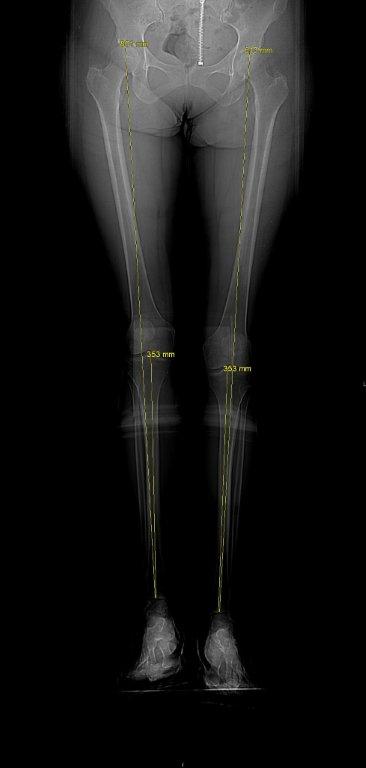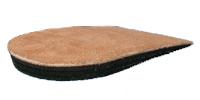Patient Education
-
- Achilles Tendonitis
- Ankle Equinus
- Arthritis of Big Toe joint
- Bunion
- Callus
- Capsulitis
- Flatfoot: Acq'd. PTTD
- Ganglion cysts
- Gouty Arthritis
- Hallux Varus
- Hammertoe deformity
- Ingrown toenails
- Kohler’s Osteochondroses
- Limb Length Inequality
- Metatarsal Arthralgia
- Metatarsal Stress Fracture
- Neuroma - Intermetatarsal
- Pediatric Flat Foot
- Peroneal dislocation
- Peroneal tendon tear
- Plantar Fasciitis
- Plantar Fibroma
- Retrocalcaneal Bursitis
- Sesamoid Fracture
- Shin Splints
- Tarsal Tunnel Syndrome
- Tailor's bunion
- Toenail Fungus
- Warts - Verruca Plantaris
-
- Overview
- Diabetic Shoes
- Shoe Modification
- Accommodative Orthotics
- Ankle Foot Orthosis (AFO) - Overview
- Richie Brace® - AFO
- Dorsiflexory Assist Device (Allard® ToeOFF Brace)
- Gauntlet AFO (Arizona®)
-
- Overview
- Preoperative Care
- Day of Surgery
- Postoperative Care
- Bunionectomy
- Bunionectomy - Post-Op
- Neuroma Surgical Care
- No Barefoot Walking
- Activity Limitations
-
-
-
-
-
Limb Length Inequality
It is common to have a difference in leg length. Many people who have leg length differences probably compensate for these differences with subtle adjustments in body mechanics and never have symptoms associated with the difference
It is the development of symptoms that can heighten the importance of leg length differences. The symptoms associated with leg length differences can range from low back, pelvis, hip, knee and even foot pain. Symptoms may even be more subjective such as a feeling of instability or asymmetry during walking.
It is not uncommon for patients to be told by healthcare providers that they have a difference in leg length as it relates to the development of symptoms. Measuring the differences in leg length can also be challenging. The direct measurement with the use of a tape measurer at specific landmarks in the ankle and pelvis has been shown to be highly inaccurate and difficult to reproduce between physicians.
If a patient does have a measurable difference in leg length as noted with a tape measurer we don’t know whether the difference is “Structural” or “Functional” between the legs. A structural difference in leg length could be found in a patient who as child had a fracture that injured the “growth plate” or post surgical after a total hip or knee replacement or after a trauma to the long bones of the leg that created shortening after healing. A functional difference in leg length could be found in patients who have imbalances in the muscle complex of the low back or pelvic girdle region, or those patients who have scoliosis or curvature of the low back region or from an abnormality in the position of the sacrum and iliac bone known as SI dysfunction.
If you suspect that you have a difference in leg length there are some subtle clues to look for. While looking in a mirror you may notice one of your shoulders may rest lower as well as one of your hips rests higher. You may also notice a difference in your apparent pants seem length or even abnormal wear when you look at the bottom of your soles. Your physician will look at some of these findings but may also note a difference in arch height which is a subtle compensation for the long leg to equalize to the short leg which will have a higher arch. During a walking examination it is not uncommon for the long leg to spend more time in contact with the ground during stance phase and for the short leg to spend more time in the air during the swing phase of gait.
For patients with a suspected difference in leg length accurate measurement is performed with a radiographic examination with a CT Scanogram. This test allows the physician to measure within millimeters the difference in leg length. An accurate reproducible approach with the CT Scanogram is preferable to using a tape measurer but it doesn’t answer the question of when do we adjust for the difference and how accurate does the proposed shoe lift have to be.
Changes in leg length are common after total knee and hip replacements but the orthopedic literature is fairly “relaxed” about when to recommend adjusting for any difference in leg length. There is also very little orthopedic literature in general about the significance of leg length difference. It does however make clinically good sense to address a leg length differences if there are symptoms in conjunction with the difference. Less clear is when to adjust for a functional difference in leg length.
If the leg length difference is less than 10 millimeter (1/4 inch) adjusting the difference can usually be done with a heel lift inside of the shoe. If the leg length difference is more than 10 millimeter the shoe lift may need to be added to the sole of the shoe as a permanent shoe modification. Modifying many different shoes with an external sole build up can limit shoe ware options and can be quite costly. The build up of the shoe lift may be done incrementally over a time frame so your body has time to adjust to the new change. Commercially available adjustable heel lifts are available without prescription. Treating a suspected leg length difference based on some of the subtle observations can be done at home by incrementally adjusting to the difference. Your subjective experience of symptom relief as a patient over time will tell you when you are close. The risks associated with home treatment in lieu of a physicians visit and evaluation will generally not put you at risk for making your symptoms worse.
Related Articles
-
Effects of limb-length discrepancyRead Article »
The amount of limb-length discrepancy necessary to adversely affect gait parameters in older adults is …
-
Limb length inequality: clinical implicationsRead Article »
The purpose of this paper is to review relevant literature concerning limb length inequalities in adults and to make recommendations …
-
Conservative correction of leg-length discrepanciesRead Article »
To study whether conservative correction in a leg-length discrepancy (LLD) of 10mm or less in patients with chronic low back pain …
-
Measurement of leg length discrepancy after total hip arthroplastyRead Article »
To measure the interobserver reliability and intraobserver reproducibility of post total hip arthroplasty (THA) leg length …
Suggested Item
-
Dr. Jill's Adjustable Heel Lifts
Slip this heel lift inside the shoe to discreetly add length to a shorter leg. Provides the height needed to support and enhance body alignment and improve balance.
Schedule an Appointment

Please call 805.543.7788 for San Luis Obispo, 805.434.2009 for Templeton, or email us to request an appointment.

